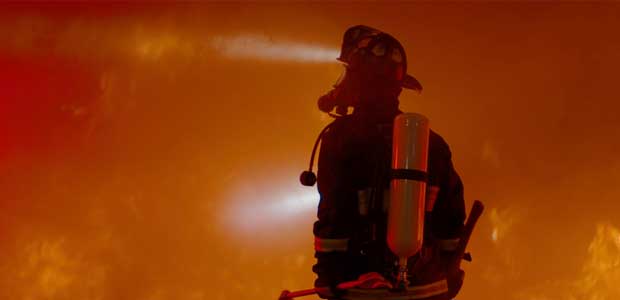
After the Fire: Are You Protected from Deadly Gases?
Because most firefighters do not carry portable gas detectors, they’re probably unaware of the danger.
- By Mike Platek
- Apr 01, 2022
When firefighters attack a structure fire, the hazards to life and health are obvious. The flames, the rolling smoke and the extreme heat are clear reminders that carelessness can lead to tragic consequences. Once the fire is extinguished, however, the operation transitions to the more routine phase of salvage and overhaul. At this point, first responders can be lulled into a false sense of security because the most serious hazard is now largely invisible—toxic gasses in the environment.
Research has shown that these toxins linger at alarming levels well after the fire has been extinguished. However, because most firefighters do not carry portable gas detectors, they’re probably unaware of the danger.
When first responders encounter fire and smoke, they wear a self-contained breathing apparatus (SCBA) to protect themselves from hazards in the air. However, even after a heavy fire is knocked down, unseen gases within the smoke will remain, keeping first responders in harm’s way.
Fire smoke is a complex mix of toxins, and hydrogen cyanide (HCN) has emerged as one of the most common and dangerous. While carbon monoxide (CO) often gets the attention, HCN is commonly found alongside it, and together, they’re known as the “toxic twins.” Both are asphyxiants, meaning they interfere with the body’s ability to process oxygen. Individually they’re dangerous. Together, they’re even more deadly.
Historically, HCN was not a concern after a typical house fire. But as the use of synthetic materials began to replace natural materials in the construction industry, HCN has become more prevalent. When heated, these fibers and petroleum-based products emit HCN at levels unseen by earlier firefighters.
The National Institute for Occupational Safety and Health (NIOSH) has determined that at 50 ppm, HCN can render someone unable to escape to safety, and thus, is immediately dangerous to life and health (IDLH). But even at much lower levels, the long-term health effects are a concern. At only 4.7 ppm, exposure should be limited to fifteen minutes per day.
While a single exposure to high concentrations of HCN is concerning, it’s the repeated exposures over a lifetime of firefighting that pose long-term harm to the human body. Each exposure damages cells, and the heart, brain and nervous system are especially prone to degradation. This is why it’s important for firefighters to monitor gas concentrations during overhaul.
This article originally appeared in the April 2022 issue of Occupational Health & Safety.